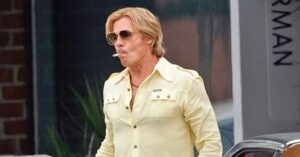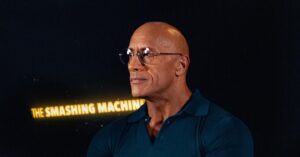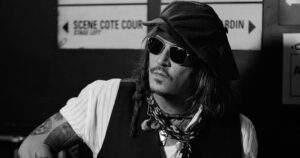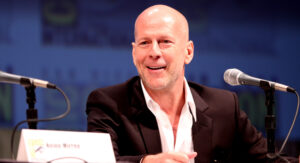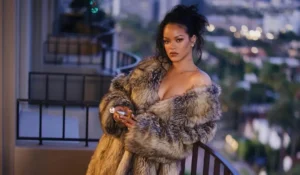
The Many Lives of Jake Gyllenhaal
Jake Gyllenhaal is that rare actor who feels both familiar and unpredictable.
He can be your steady leading man one year and a daring character chameleon the next.
Audiences know his face, but they never quite know who he’ll be when the lights go down.
That’s part of his magic.
He has built a career on smart choices, intense preparation, and a hunger to surprise.
Over time, that approach has given him a reputation as one of the most versatile performers of his generation.
He’s also become a cultural mainstay, a red carpet presence, and a thoughtful voice in Hollywood’s ongoing conversation about artistry and responsibility.
This is a closer look at the many lives of Jake Gyllenhaal, on screen and off.
Early Roots and Family Influence
Gyllenhaal was born into a family with deep ties to film and theater.
His father is a director and his mother is a screenwriter, while his sister is the acclaimed actor Maggie Gyllenhaal.
That environment shaped his curiosity and gave him a strong foundation in storytelling from a young age.
Unlike many Hollywood beginnings, his start wasn’t a glossy discovery—it was a patient, craft-first upbringing.
He grew up absorbing conversations about scripts, scenes, and structure.
He watched filmmakers wrestle with how to turn emotions into images.
He learned the language of sets, the rhythm of rehearsal, and the value of revision.
He learned that good work demands time, empathy, and courage.
Those lessons still show up in his performances.
Breaking Through: Early Roles That Stuck
Every actor needs a breakthrough, and Gyllenhaal’s came through a string of intelligent, smaller films.
He didn’t leap directly into blockbuster stardom, which helped him build credibility first.
He drew attention with thoughtful teen dramas and offbeat indies, paving the way for a more adventurous career.
His early choices signaled a taste for risk and for scripts that asked difficult questions.
That hunger set a template that persists today.
He’s never been content to play it safe.
Instead, he leans toward roles that leave a mark long after the credits roll.
Cult Icon: The Enduring Shadow of Donnie Darko
No discussion of Gyllenhaal is complete without mentioning Donnie Darko.
It wasn’t a huge success when it first landed, but it became a cult phenomenon over time.
Gyllenhaal’s brooding, haunted portrayal became a touchstone for millennial cinephiles.
He played a character caught between suburban normalcy and surreal destiny, and he made that tension feel eerily real.
The movie showed he could anchor a film with emotional depth and tonal complexity.
It also proved he could make strange material resonate, which is no small feat.
For many, Donnie Darko is where the legend began.
For Gyllenhaal, it was proof that singular storytelling finds its audience eventually.
Versatility in Motion: From Drama to Thriller
If Donnie Darko showed his range, the next decade made it undeniable.
Gyllenhaal moved gracefully between genres, building a filmography that showcases remarkable flexibility.
He’s done serious drama, edgy thrillers, romantic work, action, and even genre hybrids.
What ties these roles together is a commitment to authenticity.
He doesn’t act “around” a character—he moves in, lives there, and invites us to look around.
That approach keeps his performances grounded even when the stakes are sky high.
It’s why audiences trust him.
And it’s why directors keep asking him to push further.
Sky-High Stakes: Zodiac and the Precision of Obsession
In David Fincher’s Zodiac, Gyllenhaal captured the quiet, gnawing drive of obsession.
He played a cartoonist consumed with decoding a killer’s ciphers, balancing vulnerability with investigative grit.
Fincher’s filmmaking is famously exacting, and Gyllenhaal met that precision with discipline of his own.
His performance shows how obsession doesn’t always look loud—it can look like patience, focus, and late nights at a desk.
He communicated the human cost of chasing answers that refuse to arrive.
The result was a portrait of curiosity pushed to the brink.
Zodiac cemented his ability to carry an ensemble in a procedural puzzle.
It also foreshadowed his later fascination with characters who live at the edge of control.
Transformation as a Habit: Physical and Psychological Shifts
Gyllenhaal’s career is defined by transformation, both external and internal.
He takes the idea of character embodiment seriously, often reshaping his body and routines.
But the deeper shift is psychological.
He changes how his characters think, listen, and inhabit space.
He calibrates their gaze, their breath, their silences.
He makes small choices that quietly rewire the person we’re watching.
That micro-detail work is why his characters feel lived-in, even when they’re extreme.
He builds from the inside out, so the big moments look earned rather than performed.
As a result, the audience experiences discovery alongside him.
Nightcrawler: The Ethics of Ambition
With Nightcrawler, Gyllenhaal delivered one of the most chilling characters of the 2010s.
His portrayal of Lou Bloom, an opportunist in the world of crime journalism, is a masterclass in unsettling charm.
He lost significant weight, widening his eyes and sharpening his angles to create a predatory silhouette.
But beyond the look, he built a character whose language is all self-help jargon and transactional ethics.
It’s a portrait of ambition unmoored from empathy, delivered with eerie calm.
The performance asks uncomfortable questions about the marketplace of attention.
It also captures how charisma can mask a moral vacuum.
Nightcrawler made clear that Gyllenhaal is fearless when a role demands darkness.
Romance and Resonance: Love, Chemistry, and Tenderness
While many highlight his intensity, Gyllenhaal is equally compelling in romance.
He brings warmth and humor to characters in love, creating palpable chemistry with his co-stars.
He’s adept at the longing glance and the restrained confession.
He also understands heartbreak—how it lives in pauses and in half-smiles that don’t quite hold.
These choices make his romantic performances feel emotionally specific rather than generic.
He lets love be messy, funny, and brave, all at once.
This tenderness rounds out his range and keeps his career from being defined by severity alone.
Audiences respond to that balance.
Action with a Brain: Bringing Intelligence to Blockbusters
Gyllenhaal doesn’t treat big movies as a vacation from craft.
Whether he’s stepping into action or high-concept spectacle, he retains his detail-oriented approach.
He chooses projects where character still matters, even amidst explosions and set pieces.
He also collaborates closely with directors on tone and rhythm, aiming for cohesion in the chaos.
That mindset keeps his blockbuster work from feeling like a brand detour.
Instead, it reads as another canvas for the same careful artistry.
He brings seriousness to spectacle—without losing the fun.
That’s a tricky line to walk, and he walks it well.
Theater Roots: Craft Sharpened on Stage
Gyllenhaal’s stage work has been pivotal to his growth.
Theater demands presence, stamina, and emotional truth across repeated performances.
Working live keeps an actor honest and humble.
It’s where choices are tested night after night, refined under the pressure of an audience.
Gyllenhaal has credited his time on stage with deepening his instincts.
It strengthens the muscles that keep film acting precise.
It also reconnects him to the community aspect of storytelling.
The stage is a laboratory, and he brings those experiments back to the screen.
Preparing for Roles: Research, Ritual, and Respect
For Gyllenhaal, preparation is a form of respect—for the character, for the story, and for the audience.
He often immerses himself in research to understand the world he’s entering.
That might mean learning a skill, adopting a schedule, or studying a profession’s rhythms.
He builds rituals that help him drop into character quickly on set.
He collaborates closely with costume designers and makeup artists, finding physical anchors for psychological states.
He checks posture, footwear, and weight distribution, knowing the body shapes the mind.
He practices silence, listening for what the character might say if given time.
This meticulous preparation makes spontaneity possible when the cameras roll.
The Gyllenhaal Gaze: Eyes That Tell on Themselves
One of his most distinctive tools is his gaze.
Gyllenhaal’s eyes are expressive in a way that echoes classic movie stars.
He uses stillness to let emotion pool and flicker without speeches.
He lets the audience read the subtext in tiny movements.
That economy of expression is powerful in close-up.
It makes his performances feel intimate even in large-scale films.
He can switch from yearning to menace with a slight change in focus.
Directors trust him to carry crucial moments with minimal dialogue.
Collaborations That Count: Directors and Creative Partners
Great careers are built on great collaborations, and Gyllenhaal cultivates them.
He returns to filmmakers who challenge him and to crews who elevate the work.
He’s known for being generous on set, investing in the ensemble as much as in his own role.
He respects the chain of creativity that makes a movie happen.
He understands that cinematographers, editors, and designers all shape performance.
He listens to notes and offers thoughtful feedback in return.
This collaborative spirit leads to more daring choices and tighter films.
It also builds trust, which is the lifeblood of creative risk.
Characters on the Edge: Anxiety, Control, and Identity
A recurring theme in his roles is the tension between control and chaos.
He gravitates to characters who are trying very hard—sometimes too hard—to hold it together.
These people are often anxious, obsessive, or perfectionist.
They want answers where the world offers uncertainty.
They want order where life keeps suggesting mess.
That tug-of-war creates potent drama.
Gyllenhaal shows how control can be both armor and prison.
He reveals the cracks, then lets the light through.
Comedy in the Corners: Dry Wit and Timing
Though he’s celebrated for intensity, Gyllenhaal has a dry comedic streak.
His humor shows up in timing, reaction, and subtle line deliveries.
He knows when not to push for laughs and lets the situation do the work.
That restraint respects the audience’s intelligence.
It also makes his comedic beats feel earned rather than pasted on.
In ensemble settings, he plays generous support, letting others shine while keeping the scene alive.
This elasticity across tones is part of his staying power.
It proves range isn’t just about drama—it’s about rhythm.
Image and Identity: Off-Screen Presence
Off-screen, Gyllenhaal carries a thoughtful, occasionally enigmatic persona.
He’s present in interviews without revealing everything.
He speaks carefully about process, emphasizing curiosity and gratitude.
He supports causes that align with empathy and access to the arts.
He keeps a boundary around the parts of life that don’t need performance.
This balance makes him relatable without sacrificing privacy.
It also adds a layer of intrigue that enhances his on-screen work.
Mystery, when well-managed, is a career asset.
The Power of Restraint: Understatement as Signature
One of Gyllenhaal’s defining qualities is restraint.
He doesn’t oversell feeling.
Instead, he trusts the audience to meet him halfway.
That trust invites deeper engagement.
Viewers lean in, listen harder, fill the space with their own experience.
Understatement can be more searing than spectacle when used well.
Gyllenhaal knows when to hold and when to break.
That control is a hallmark of maturity.
Craft over Hype: Longevity by Design
Sustaining a career in Hollywood requires more than popularity.
It demands a consistent, craft-first approach that can weather trends.
Gyllenhaal seems to understand this intuitively.
He avoids overexposure while staying present in the cultural conversation.
He alternates between large projects and intimate ones to keep his creative muscles balanced.
He invests in roles that stretch him rather than repeat him.
That strategy yields longevity and ongoing relevance.
It’s a blueprint many actors try to follow.
Visibility and Reach: Awards, Festivals, and Audience Trust
Awards are not the sole measure of success, but they signal respect.
Gyllenhaal has earned recognition from festivals, critics, and guilds.
He turns up on “best of” lists for performances that carry weight.
At the same time, the ultimate award is audience trust.
People seek out his work because they know it will be interesting.
Even when a film divides opinion, his performance usually lands.
That reliability is hard-won.
It’s a compact built on years of integrity.
Streaming Era Savvy: Finding Stories Where They Live
The industry has shifted rapidly, with streaming platforms becoming powerhouses.
Gyllenhaal has navigated that shift by choosing stories that fit the medium.
He understands that some narratives thrive in theaters, while others resonate at home.
He doesn’t chase format for its own sake—he chases the right home for the story.
That adaptability keeps his work accessible to diverse audiences.
It also allows him to experiment with release strategies and audience engagement.
He meets viewers where they are without compromising quality.
That’s modern starcraft at its best.
Physical Commitment: Training, Stunts, and Safety
When roles demand physicality, Gyllenhaal commits.
He trains carefully, often working with specialists to build credible movement.
He respects stunt professionals and the choreography that keeps sets safe.
He learns the difference between realism and recklessness.
He understands that physical detail—how a character runs, fights, or tires—tells story.
He keeps injury prevention in mind, knowing sustainability matters.
He treats the body as an instrument that needs maintenance.
This professionalism builds trust with crews and co-stars alike.
Vocal Choices: Accents, Cadence, and Character Music
Great screen acting isn’t just about the face—it’s also about the voice.
Gyllenhaal pays attention to accent work, but also to cadence and phrasing.
He adjusts pitch and pace to signal confidence, fear, or manipulation.
He finds where a character’s sentences start to fray under pressure.
He listens to how people in specific professions talk and adopt their rhythms.
He treats dialogue as music, searching for the right tempo.
These vocal choices deepen character without calling attention to themselves.
They make scenes feel tuned rather than recited.
Emotional Intelligence: Listening as Superpower
A consistent strength in Gyllenhaal’s work is listening.
He lets other characters affect him in real time.
He resists the urge to pre-plan every beat, leaving room for surprise.
That openness creates chemistry and reveals subtext.
It also elevates his scene partners, which improves the entire film.
Listening is a humility skill, and it’s rarer than it should be.
It signals confidence without ego.
It’s one reason directors trust him with complex material.
Business Brain: Producing, Developing, and Choosing Wisely
Behind the scenes, Gyllenhaal is selective about development.
He looks for scripts with strong character arcs and moral stakes.
He collaborates with producers who value long-term relationships.
He is mindful of release windows, marketing narratives, and audience appetite.
He understands how to position a film without overselling it.
He knows when a project needs a quiet rollout and when it should roar.
This business acumen protects the art by stewarding it well.
It also helps him say “no” when a role doesn’t align with his compass.
Cultural Conversations: Responsibility and Representation
Actors today navigate a more conscious cultural landscape.
Gyllenhaal approaches that space with care.
He considers the implications of the roles he chooses and the stories they tell.
He supports colleagues who are pushing for equity and access.
He participates in dialogue without centering himself unnecessarily.
That balance keeps the focus on the work while honoring the moment we’re in.
It’s a model for how public figures can contribute thoughtfully.
It’s also consistent with the quiet rigor of his craft.
Style and Presence: Red Carpet as Narrative
There’s an art to public presentation, and Gyllenhaal has refined it.
His red carpet style is polished but not loud, expressive but not theatrical.
He uses fashion as a supporting character, not the lead.
His choices complement the film he’s promoting rather than overshadow it.
That cohesion builds a subtle narrative around each project.
It’s marketing that feels like storytelling.
It’s professional without being stiff.
It extends the experience beyond the screen.
Fan Connection: Openness Without Overshare
Gyllenhaal maintains a measured relationship with fans.
He shares enough to build trust, but not so much that the work gets crowded out.
He values genuine interactions over volume.
He shows up for Q&As and festival conversations with presence.
He lets curiosity guide the exchange.
He answers thoughtfully, even when questions are familiar.
This respectful reciprocity sustains a healthy fandom.
It keeps the focus on stories and shared experience.
The Longevity Equation: Passion, Patience, and Play
Sustained excellence requires a blend of passion and patience.
Gyllenhaal seems to savor the long game.
He keeps exploring without rushing to define himself.
He approaches each role like a fresh question rather than a statement.
He leaves room for play—serious work that still delights in discovery.
That approach keeps his career nimble and his performances alive.
Audiences feel that curiosity and respond in kind.
It’s why his work continues to matter.
What Jake Gyllenhaal Represents Today
Today, Jake Gyllenhaal stands as a symbol of craft-driven stardom.
He’s proof that you can build a major career on taste, discipline, and daring.
He reminds us that movie stars don’t have to be predictable to be beloved.
They can be adventurous and still bring audiences along.
He shows that seriousness and enjoyment are not opposites—done right, they amplify each other.
As he continues choosing bold stories, his legacy keeps expanding.
And as new audiences discover his films, the conversation keeps renewing itself.
That’s the sign of enduring relevance.
That’s the mark of an artist worth following.
Where to Explore More of His Work
If you’re curious to explore, seek out his cornerstone titles.
Watch the atmospheric mystery of Zodiac.
Dive into the unsettling brilliance of Nightcrawler.
Revisit the cult electricity of Donnie Darko.
Look for his stage appearances through reputable theater outlets like Broadway.com.
Follow film news and interviews on Variety and The Hollywood Reporter.
Browse upcoming releases on IMDb.
These paths offer a rich view of his evolving artistry.
They also show how his choices continue to shape the modern acting landscape.
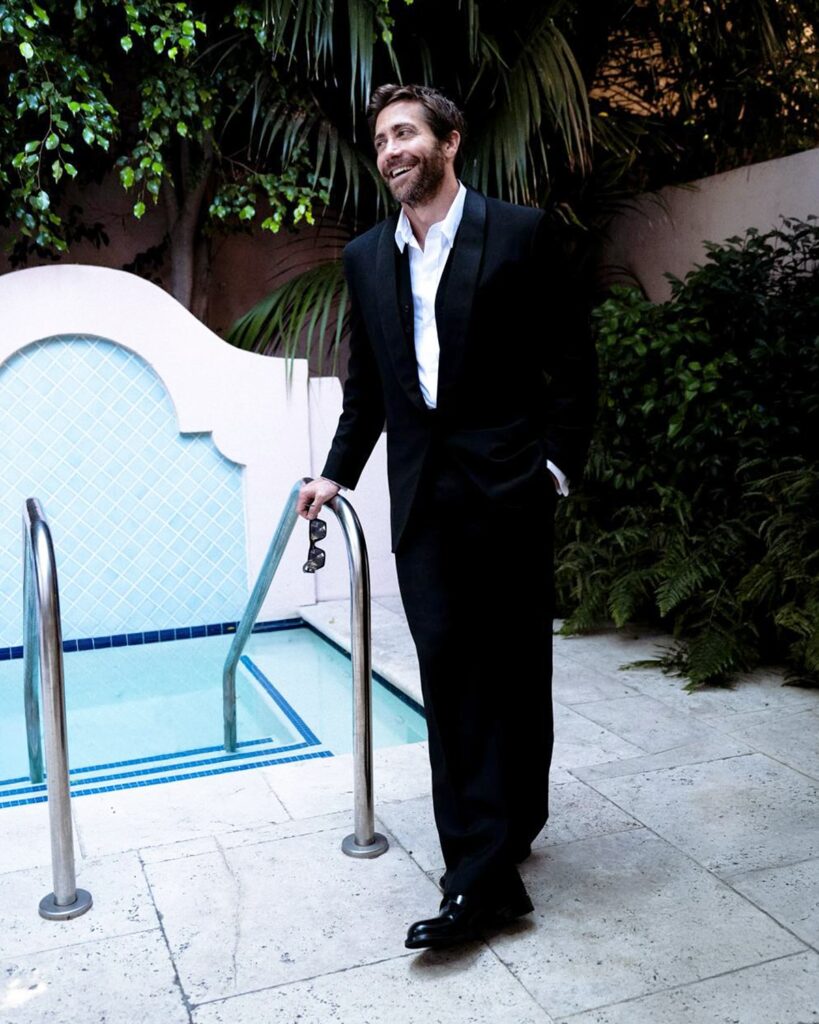
Also Read: F1

